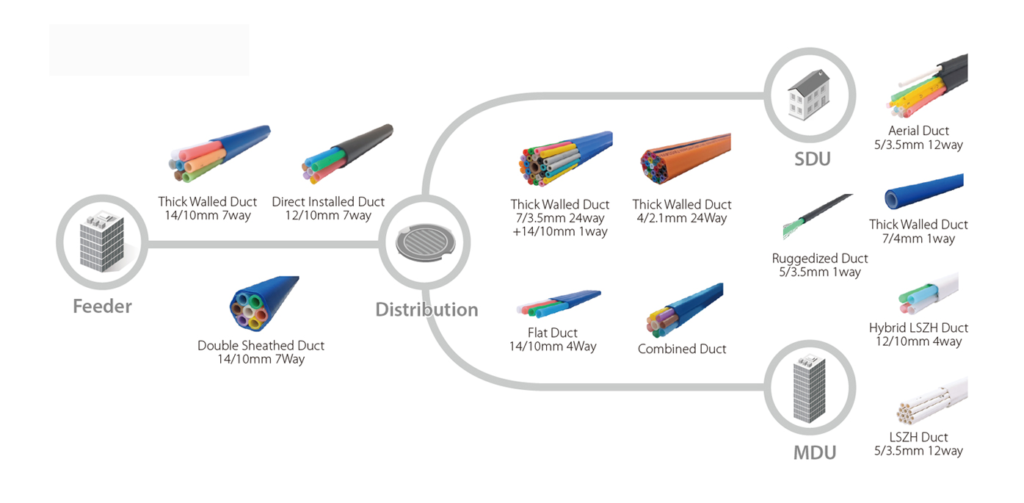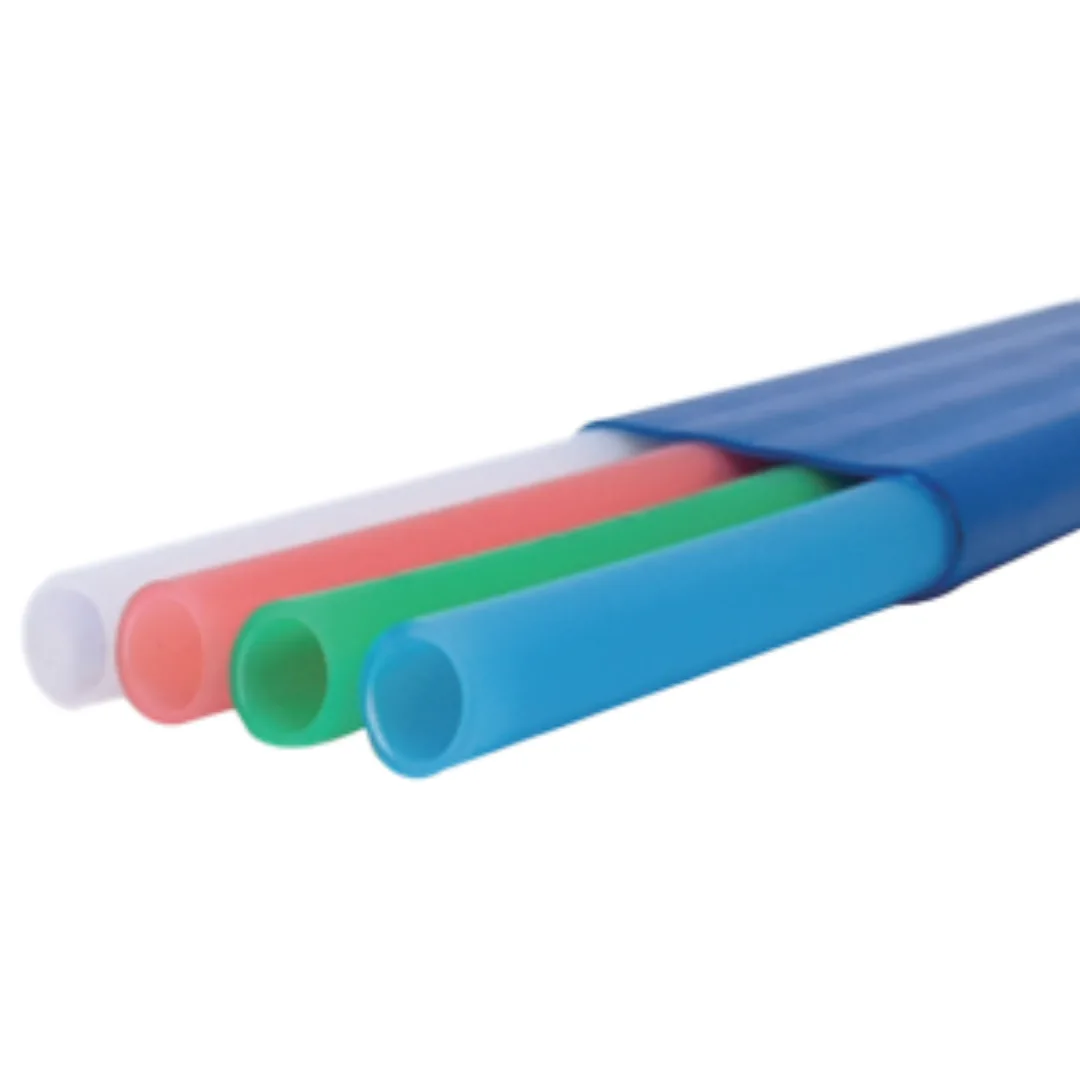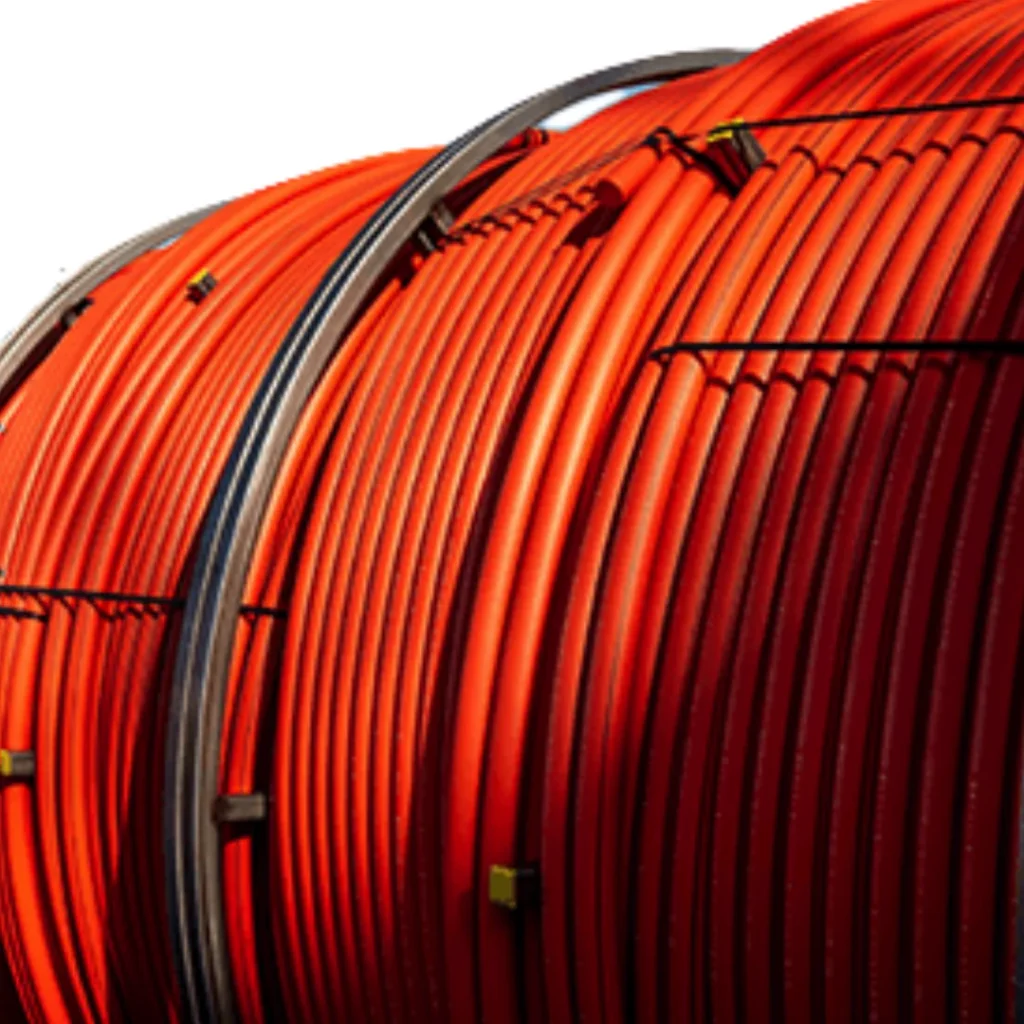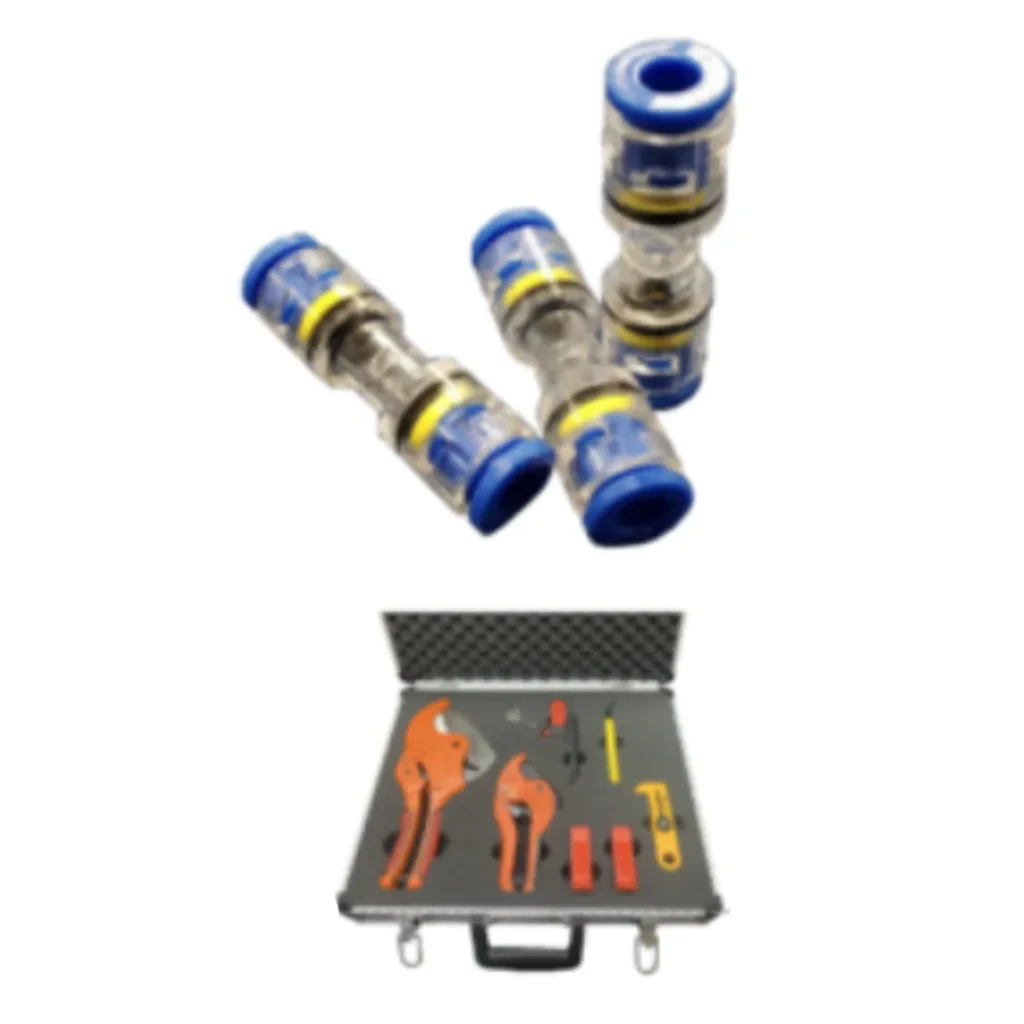There are many types of microduct and each of them are suitable for different applications in the field.
The microduct application map shown below displays the various types of microduct utilized by microduct application.
We distribute microduct that supports both buried and aerial applications for the First Mile, Middle Mile, or Last Mile.

Starting out with the feeder, the most common installation method is open trenching or HDD. For this it would be appropriate to use a thick-walled duct, or a direct buried high strength duct assembly. Because the feeder cable is likely a higher capacity cable, you will want a duct that is large enough such as a 12 by 10mm or 14 by 10mm if using thick-walled duct. Choose a duct assembly with enough tubes for the cables that you plan to use, plus at least one for emergency repair. If future expansion is a possibility, it is wise to leave several spare empty ducts.
Next are the distribution lines which are located closer to the subscriber in what is referred to as the last mile. Because this is in a populated area and the pathways will clearly be along the streets and sidewalks that pass by each home, you may use micro or mini trenching, in which case a flat duct or link duct would be best. Or you may continue to use an open trenching or HDD method, in which case Thick-Walled Duct or direct buried high strength is a better choice. If this is a brownfield area, there may be an existing conduit, in which case direct install microduct will be the best choice to make best use of space constraints within the conduit. In either case, choose a microduct size and configuration that suits your needs. The fiber counts will likely be lower for the last mile, so a 10 by 8mm could work. Again, make sure spare capacity is factored in for emergency repair and future expansion.
Finally, for the secondary distribution or drops, A smaller 5/3.5mm duct or 7/3.5mm duct if using Thick-Walled Duct is sufficient for blowing in ABF directly to the customer. If you plan to install all drops straight to the home from the secondary concentration point, a series of individual tubes can be utilized. If you plan on using duct branch closures, pick a microduct assembly with up to 24 tubes inside, which can be broken out of the bundle at the customer’s property line. These are available in Thick-Walled Duct, flat style, direct buried high strength, or even LSZH if installed indoors.
All microducts from PI for outside plant applications have rip cords and built-in insulated tracer wire for locating the duct after the trench has been covered. For blowing performance, the inner tubes in the microduct are coated with silicone. Each tube or microduct is made of HDPE material.




